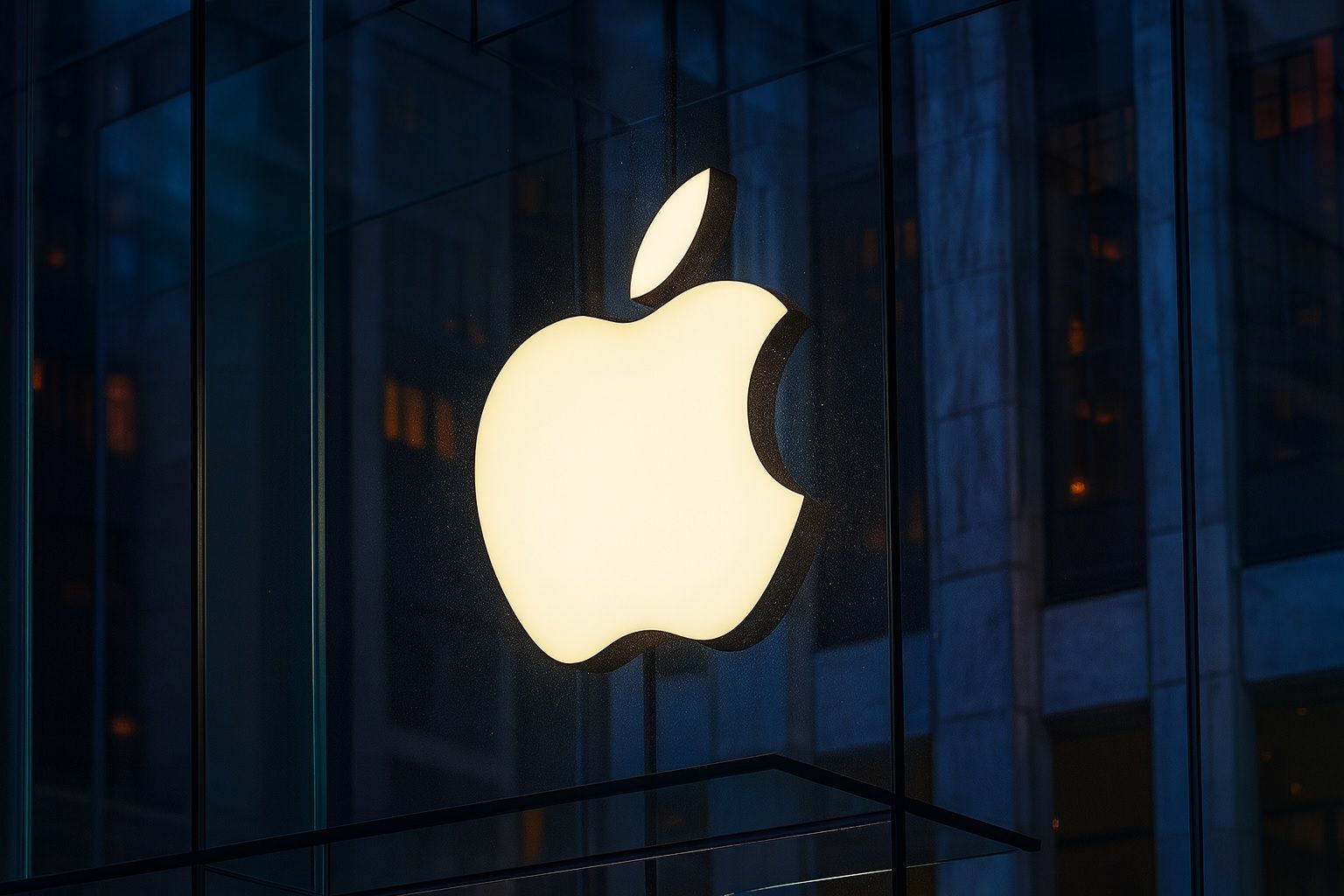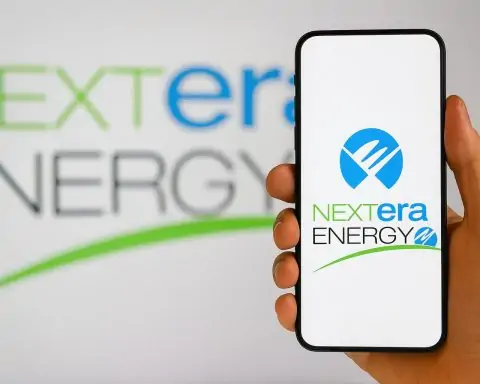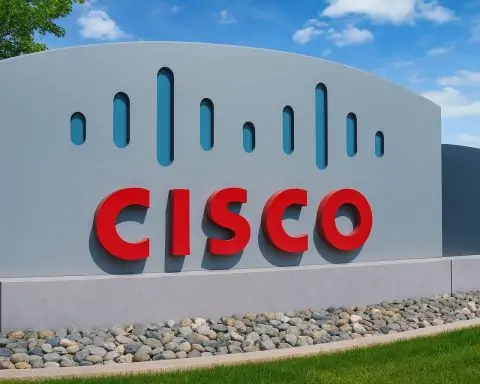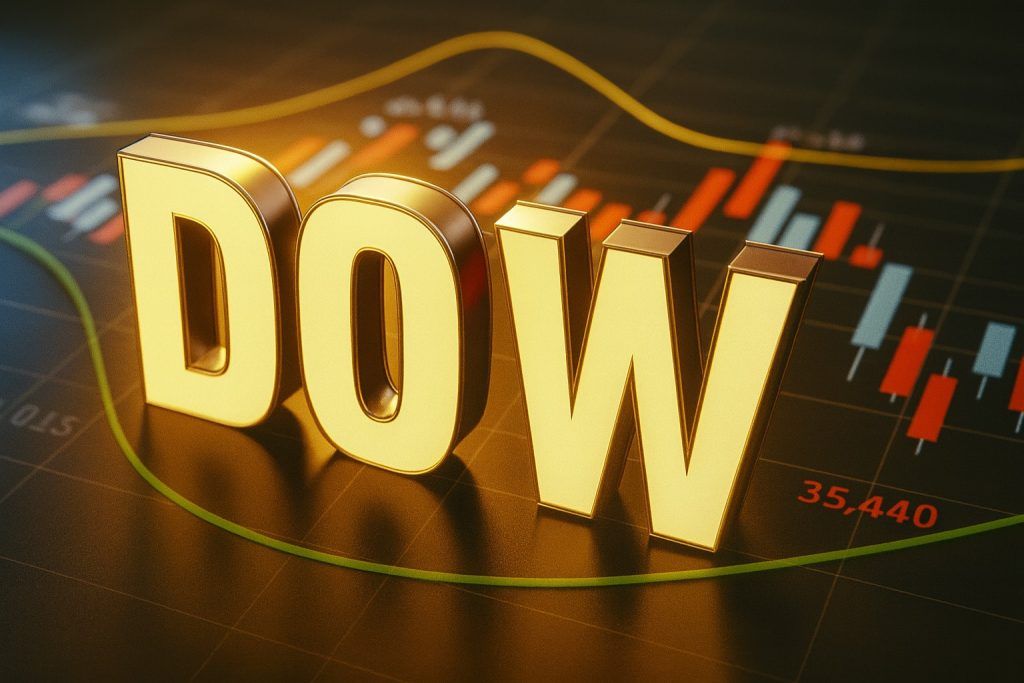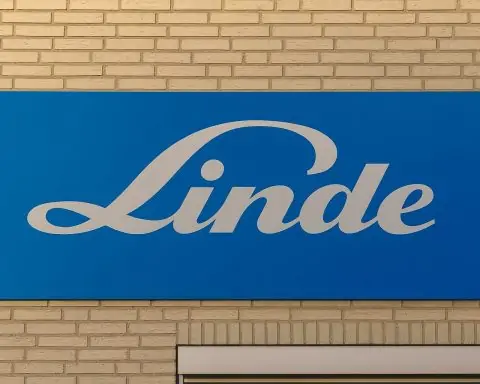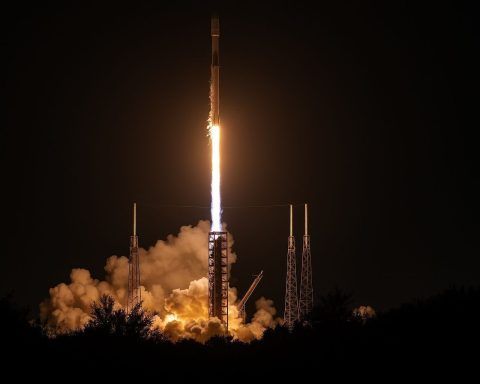- Apple’s Market Cap Surges: On Oct. 28, Apple’s share price briefly reached about $269.89, giving it a $4.005 trillion valuation – only the third U.S. company ever to hit $4T [1].
- Microsoft Joins Club: Microsoft closed Oct. 28 at $542.07, valuing it around $4.04 trillion [2]. The software giant briefly passed $4T again this week, rejoining Nvidia in the $4T+ club.
- Nvidia Nears $5T: Nvidia is set to become the first $5 trillion company. Shares jumped after CEO Jensen Huang announced $500 billion in AI chip orders and plans for new supercomputers [3].
- AI-Fueled Rally: Big Tech has added roughly $6 trillion of market value since late 2022 on AI optimism [4]. The Nasdaq and S&P 500 are at record highs, driven by the surge in tech stocks [5].
- Demand Drivers: Strong iPhone demand is key – the new iPhone 17 launch “has done much better than anticipated,” say analysts [6]. As Northlight’s Chris Zaccarelli notes, “the iPhone accounts for over half of Apple’s profit and revenue,” fueling the rally [7]. Microsoft, meanwhile, is benefitting from booming cloud and AI sales (its Azure cloud grew ~39% in Q4) [8].
- Bullish Forecasts: Wall Street is overwhelmingly positive. For example, 32 of 34 analysts rate Microsoft a “Buy,” with 12-month price targets around $620–630 (implying ~15–20% upside) [9]. Dan Ives of Wedbush predicts Microsoft could ultimately reach a $5 trillion valuation as its AI initiatives scale [10].
- Caution Ahead: Some experts warn valuations are frothy. JPMorgan CEO Jamie Dimon says he’s “far more worried” about overheated markets and a possible “significant correction” if the AI boom stalls [11]. Indeed, IBM’s Altman and others have cautioned the frenzy may be outpacing fundamentals [12].
Tech Stocks Rally to Record Highs
U.S. equity indexes opened the week with a bang as investors piled into 2025’s biggest winners. On Oct. 27 the Nasdaq jumped 1.4% and the S&P 500 0.8%, both closing at fresh all-time highs [13]. Optimism over a looming Fed rate cut and a potential U.S.–China trade deal boosted sentiment [14] [15]. Most critically, Big Tech led the charge: Apple, Microsoft, Alphabet, Amazon and Meta (the so-called Magnificent Seven) are reporting earnings this week, and have collectively gained roughly $6 trillion in value this year [16]. Investors point to strong fundamentals — about 87% of S&P companies have beaten profit forecasts recently [17] — but also credit a wave of AI-driven enthusiasm. As one strategist put it, cooling inflation and hopes of Fed easing have provided a “notable macro tailwind” for high-growth tech shares [18].
Apple’s $4 Trillion Milestone
Apple’s market value leapfrogs past the $4T mark thanks to resurgent iPhone sales. Its stock has rallied 56% since April, adding about $1.4T in market capitalization, after reports of unexpectedly strong demand for the iPhone 17 family [19]. On Oct. 28 Apple shares briefly hit $269.89, giving a $4.005T valuation [20] (they later settled just under that, ~ $269). Analysts attribute this rally to the iPhone’s dominance. “The iPhone accounts for over half of Apple’s profit and revenue,” notes Northlight Asset’s Chris Zaccarelli [21]. Indeed, early data suggest the new models are outperforming: research firm Counterpoint found iPhone 17 sales up ~14% in key markets versus last year [22], and Evercore ISI reports “stronger initial demand” in China [23].
Looking ahead, Wall Street expects Apple’s fiscal Q4 (ending Sept.) to show an all-time high in revenue (~$101 billion), about +6–7% YoY [24]. Brokerage forecasts are bullish: analysts at Evercore ISI and B. Riley have moved Apple to “outperform” lists as supply-chain checks confirm robust orders [25]. Even so, some worry Apple’s late start on AI features could limit upside. The company has been cautious on AI (delaying a Siri upgrade to next year) and is scrambling to partner with AI firms (talks with Google’s Gemini, OpenAI, Anthropic) [26]. But for now, the market is focused on strong product momentum. As one observer puts it, the stellar Q4 could “justify the rally” [27].
Microsoft’s AI-Powered Surge
Microsoft’s stock has likewise been firing on all cylinders. On Oct. 28 MSFT closed at $542.07, valuing the company at ~$4.04 trillion [28]. Shares are trading within a hair’s breadth of their all-time highs (~$554) reached in July [29]. This surge is being driven by Microsoft’s leadership in cloud and AI. Its Azure cloud revenue grew roughly 39% last quarter, far outpacing AWS (17%) and Google Cloud (32%) [30], and reflecting strong enterprise demand. The company has announced massive investments — including a recent $17.4 billion deal for Nvidia AI chips and a $40B data-center purchase with Nvidia/BlackRock [31] — to fuel future growth. CEO Satya Nadella has reorganized the business to focus heavily on AI R&D [32].
Analyst sentiment on Microsoft is overwhelmingly positive. A TS2.Tech analysis notes that 32 of 34 analysts rate MSFT a “Buy,” with 12-month price targets clustered around $620–630 [33], implying ~15–20% upside. “Top bulls see $650+ ahead,” the report adds [34]. Wedbush’s Dan Ives even envisions MSFT eventually hitting a $5 trillion value as its AI initiatives scale [35]. As Gerrit Smit of Stonehage Fleming observes, “Microsoft is becoming more of a cloud infrastructure business and a leader in enterprise AI” [36]. In short, both the numbers and the narrative favor Microsoft as a prime AI-era winner.
Nvidia’s Historic Run
Meanwhile, Nvidia has led this levitation. As of Oct. 29, Reuters reports Nvidia was on track to become the first $5 trillion company, after announcing $500 billion in new AI chip orders and supercomputer projects [37]. Its stock surged 3.1% on the news [38], reflecting confidence in unceasing AI spending. Nvidia’s meteoric rise has made it the most valuable U.S. company — its market cap now surpasses Apple and Microsoft combined [39]. “In many ways, everything that could have gone right for [Nvidia] has gone right over the last…24 hours,” quipped Michael Brown of Pepperstone [40].
Nvidia’s dominance has injected even more AI fervor into markets, but it also raises caution. Its $5T valuation (roughly half of Europe’s entire blue-chip index) is unprecedented, and it has attracted regulators’ attention [41]. Still, for now, Nvidia and its peers remain in a sweet spot: the only trio above $4T. (In fact, just since ChatGPT’s launch in 2022, analysts calculate that AI hype has added about $6 trillion to Big Tech’s value [42].)
Analyst Forecasts & Risks
With Apple, Microsoft and others printing sky-high numbers, the question is whether the optimism can last. Most analysts continue to raise their targets. For example, Wedbush’s Ives set a $625 price target on MSFT and sees Azure/AI potentially adding ~$25B in revenue in the next year [43]. Evercore’s Apple team expects the strong iPhone momentum to translate into upside surprises this quarter [44]. By and large, the consensus is bullish: nearly all major analysts rate the Magnificent Seven as buys [45] [46].
But there are warning signs too. The very same euphoria has some insiders uneasy. JPMorgan’s Jamie Dimon has publicly warned of frothy valuations in tech, fearing a “significant correction” if the AI boom falters [47]. OpenAI’s Sam Altman and Amazon’s Jeff Bezos have similarly cautioned that the market frenzy may be outpacing current fundamentals [48]. Valuations are high – Microsoft trades near 28× forward earnings [49], for instance – leaving little margin for error.
The immediate catalyst will be this week’s earnings and the Fed meeting. Apple and Amazon report Oct. 30, after Microsoft, Google and Meta on Oct. 29 [50] [51]. Analysts will focus on product demand and AI spending guidance. At the same time, the Fed looks poised to cut rates by 0.25% (meeting on Oct. 30) [52], which could keep liquidity ample. In the near term, strong results could propel these stocks even higher. But if any leader disappoints — or if AI proves slower to monetize — a swift unwind could ensue. As one investor put it, “adoption may be low right now… we may not be at a bubble stage yet,” but the risks of a pullback are rising if reality comes up short [53] [54].
Sources: Market data and analysis from Reuters, Bloomberg, ABC News (AP) and TechStock² (ts2.tech) reports [55] [56] [57] [58] [59]. (Stock prices as of Oct. 29, 2025.)
References
1. www.reuters.com, 2. abcnews.go.com, 3. www.reuters.com, 4. www.reuters.com, 5. ts2.tech, 6. ts2.tech, 7. www.reuters.com, 8. ts2.tech, 9. ts2.tech, 10. ts2.tech, 11. ts2.tech, 12. www.reuters.com, 13. ts2.tech, 14. ts2.tech, 15. ts2.tech, 16. ts2.tech, 17. ts2.tech, 18. ts2.tech, 19. www.bloomberg.com, 20. www.reuters.com, 21. www.reuters.com, 22. www.reuters.com, 23. ts2.tech, 24. ts2.tech, 25. ts2.tech, 26. www.reuters.com, 27. ts2.tech, 28. abcnews.go.com, 29. ts2.tech, 30. ts2.tech, 31. ts2.tech, 32. ts2.tech, 33. ts2.tech, 34. ts2.tech, 35. ts2.tech, 36. ts2.tech, 37. www.reuters.com, 38. www.reuters.com, 39. www.reuters.com, 40. www.reuters.com, 41. www.reuters.com, 42. www.reuters.com, 43. ts2.tech, 44. www.reuters.com, 45. ts2.tech, 46. ts2.tech, 47. ts2.tech, 48. www.reuters.com, 49. ts2.tech, 50. ts2.tech, 51. abcnews.go.com, 52. ts2.tech, 53. www.reuters.com, 54. ts2.tech, 55. www.reuters.com, 56. abcnews.go.com, 57. www.reuters.com, 58. ts2.tech, 59. ts2.tech
